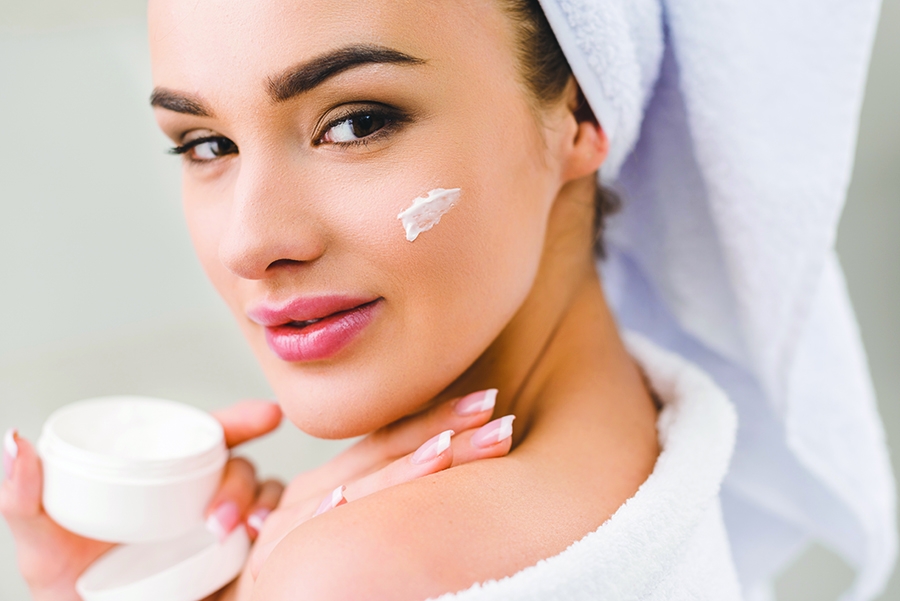The key to helping clients successfully navigate the dangers of dehydrated, damaged skin is keeping skin in perfect isotonic balance. To create this balance, hydration must be accompanied by moisturization. As a result, the skin stays protected and healthy-looking, while achieving that coveted dewy glow.
MOISTURE-BOOSTERS

There are two important steps for successfully incorporating hydration into treatments.
Step 1: Hydrate with moisture-boosters. Use products with high concentrations of water-loving molecules, such as hyaluronic acid, glycerin, urea, and sodium pyroglutamic acid (PCA), which make up skin’s natural moisturizing factors (NMF). These ingredients plump and balance the water content of skin cells and hydrate skin throughout the day.
Step 2: Moisturize with oils that seal in hydration and protect skin’s moisture barrier. Use lipids that include ceramides, butters, or botanical oils – such as kukui, baobab, moringa, and sacha inchi – which are known for their high levels of skin-perfecting omega-3 and omega-6 fatty acids. These types of lipids prevent transepidermal water loss (TEWL) and help keep skin healthy, elastic, and supple.
Following these two steps helps maintain skin’s isotonic balance and regulates the permeability of skin cells and the skin barrier. This harmonious balance protects skin from issues arising from chronic dryness and dehydration due to skin stressors that include desert climates, wind, cold air, heated rooms, hot showers, and long soaks in jacuzzis.
EXFOLIATE FOR A CLEAN SLATE
No matter how much moisture is put onto skin, it will not create an isotonic balance if dead skin cells are in the way. Exfoliation is essential. Mandelic acid, lactic acid, and other alpha hydroxy acids are ideal for clearing away debris and smoothing roughness so that hydrating molecules and anti-aging ingredients can get in. However, be careful not to over-exfoliate dry skin, which can trigger the skin to over-compensate by producing excess oil.
MOISTURE-BUSTERS
For blemish-prone skin or congested pores, ingredients like salicylic acid and benzoyl peroxide target acne-causing bacteria and enlarged pores but can upset skin’s moisture balance and damage the barrier function. The solution is to apply non-alcohol toner, hyaluronic acid, and non-comedogenic lipids. For sun-damaged or aging skin, derivatives of vitamin A, including retinol, retinyl palmitate tretinoin, and isotretinoin, smooth out wrinkles, but can cause irritation and dryness as a side effect. The solution is to layer moisture-boosters and serums containing lipids, growth factors, stem cells, peptides, and antioxidants.
STRIVE FOR BALANCE
The key factor for alleviating dry or dehydrated skin in facial treatments is creating balance by applying water-loving molecules and locking them in with lipids. Chronic dryness creates many skin issues, especially for younger skin, so it is essential to teach clients proper homecare, as well. Advise them to apply a mineralized toner throughout the day and to use a lipid moisturizer or serum to seal in hydration and prevent it from evaporating. This isotonic balance will help create the dewy, luminous skin that clients crave.
